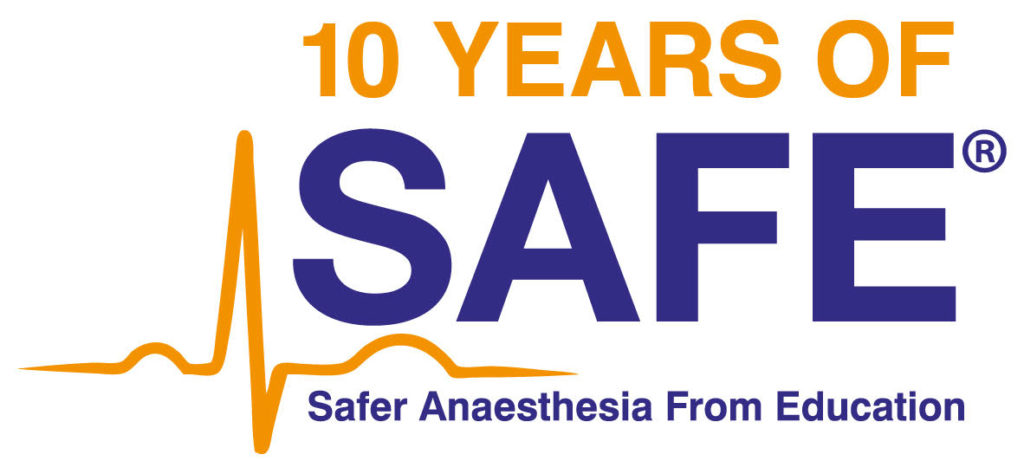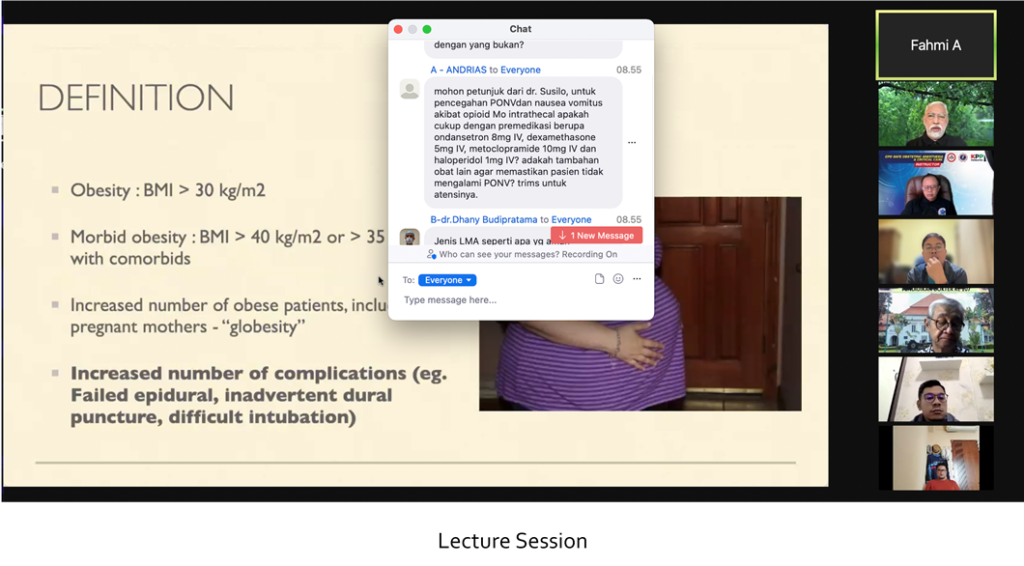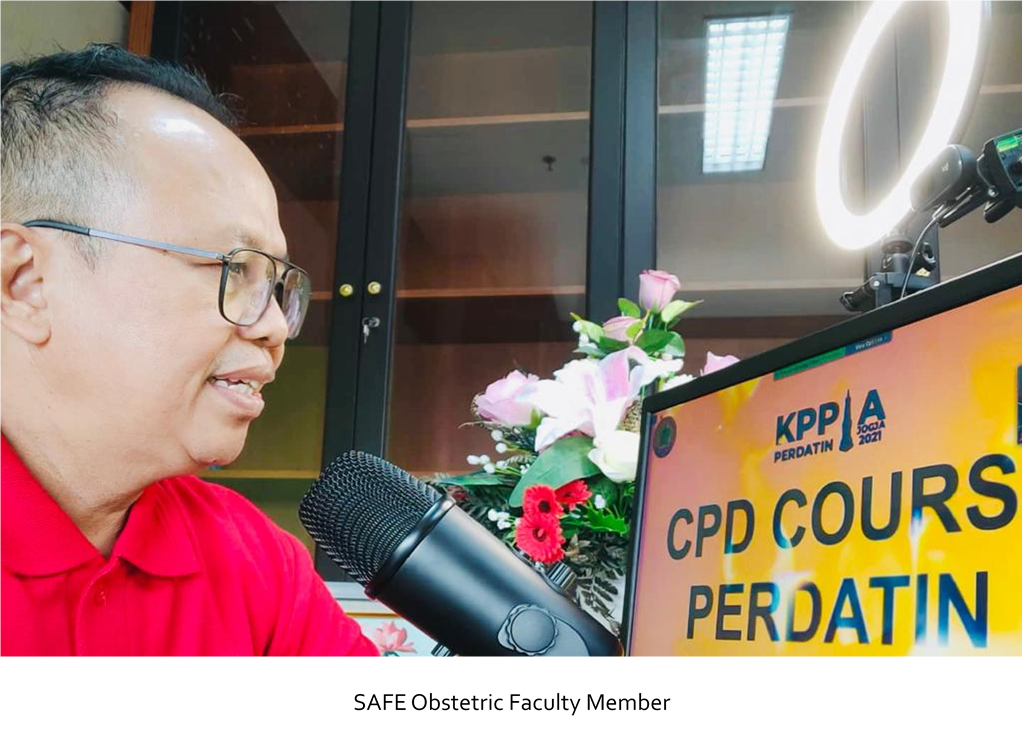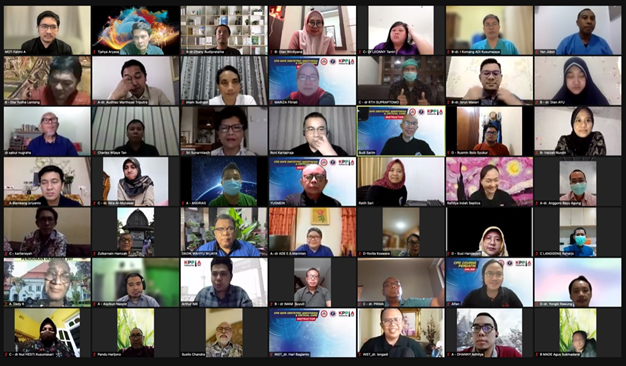During the COVID-19 era, SAFE Obstetrics has never been more vital to the health outcomes of Indonesia’s expectant mothers. Dr Susilo Chandra discusses the challenges of creating a virtual course to train the country’s anaesthesia professionals.

Saving mothers’ lives is a constant and challenging job, especially during the COVID-19 pandemic. Before the pandemic, we were struggling to save mothers from many preventable causes. However, during this pandemic, COVID-19 creates another challenge to save mothers’ lives.
An Indian report found that there was a substantial reduction in pregnant women attending healthcare centres after the emergence of COVID-19. This would suggest that those women were seeking care at different facilities or delivering at home. Additionally, many healthcare centres switched their services to cater for COVID-19 patients which eventually reduced their maternity services. This shift of practice will probably increase obstetric risks for mothers.

Another challenge was created by the COVID-19 infection itself. Severe infection of COVID-19 increases the maternal mortality rate regardless of their obstetric status. With 300 deaths per 100,000 births, Indonesia already has a very high maternal mortality rate. This figure is expected to increase due to multiple challenges presented by COVID. Our job to ensure the health of mothers and newborns is becoming more and more challenging.
Improving our knowledge and skills as healthcare providers is highly beneficial for our patients. Humans are long known to have a great skill to adapt and evolve. Hence, the inability to conduct face to face meetings should not prevent us to hold this important course. We decided to modify the course to adapt to the current environment and yet still meet the training needs of anaesthesia providers across Indonesia.
The first SAFE obstetric course in Jakarta, Indonesia was held in 2018, instigated by myself as a member of the Indonesian Society of Obstetric Anesthesia and Critical Care (INA-SOACC), in collaboration with Steve Barret and colleagues from the UK’s Royal College of Anesthetists (RCoA). I had previously taken part in the SAFE Training of Trainers (ToT) course which enabled me to set up an Indonesia course.

Our idea was to hold an online course that provided an emotional connection between participants whilst at the same time providing them with learning opportunities to gain relevant knowledge and skills.
A key aim of the course was to provide participants with knowledge that they could understand and relate to their daily professional life. To achieve this we conducted our own research, meet with a number of committees and trailed various courses to find the best approach to delivering the SAFE programme.
Every week the organizing committee met online to discuss the strengths and weaknesses of different course models. From these trials, we decided that the most challenging part was the language barrier in the course materials. To ensure trainers and participants alike were able to understand everything, lectures and all course materials were translated into Bahasa.
Using the Zoom online meeting platform, we created “breakout rooms“ to replicate the usual face-to-face stations and a “main room“ to replace the lecture room. The participants’ opinions and involvement were in group discussions was actively encouraged throughout the course.
Of course, the experience of an online course was still different from the face to face meetings. In the offline course, we are able to see, feel, listen and use our five senses. We tried to compensate for not being able to meet in person through the provision of high-quality presentations, clear audio and actively encouraging active discussions between participants and trainers.
The course was evaluated with online pre and post-test questionnaires, the results of which showed high levels of comprehension of the essential course messages and overwhelmingly positive feedback from the course participants. The evaluations showed that participants felt that they could relate to the materials and skill stations based on their own experiences. These positive feedbacks coming from the participant were highly appreciated by the committee. Hence, we are challenged to conduct even better courses in the future with the final goal to reduce maternal mortality.
This is just a short story from our SAFE Obstetric journey in Indonesia. We started with many obstacles and yet, here we are, sharing our short success story from the world’s largest archipelago, Indonesia. We choose to adapt and refuse to quit even as this pandemic creates challenges. This achievement makes us believe that we will witness more smiling mothers while holding their newborns safe sound in their arms.
Thank You SAFE, Thank You WFSA.
Susilo Chandra, Indonesian Society of Obstetric Anesthesia and Critical Care
Further resources
Safer Anaesthesia From Education (SAFE) information page
SAFE Paediatric & Obstetric Anaesthesia Pocket Handbook
‘I have watched SAFE grow and grown with it’ – Dr. Mary T. Nabukenya, Uganda.
‘I find myself learning something new with every course’ Dr Ann Lee Clover , South Africa
SAFE Obstetrics in Papua New Guinea Terry Loughnan, Australia,






